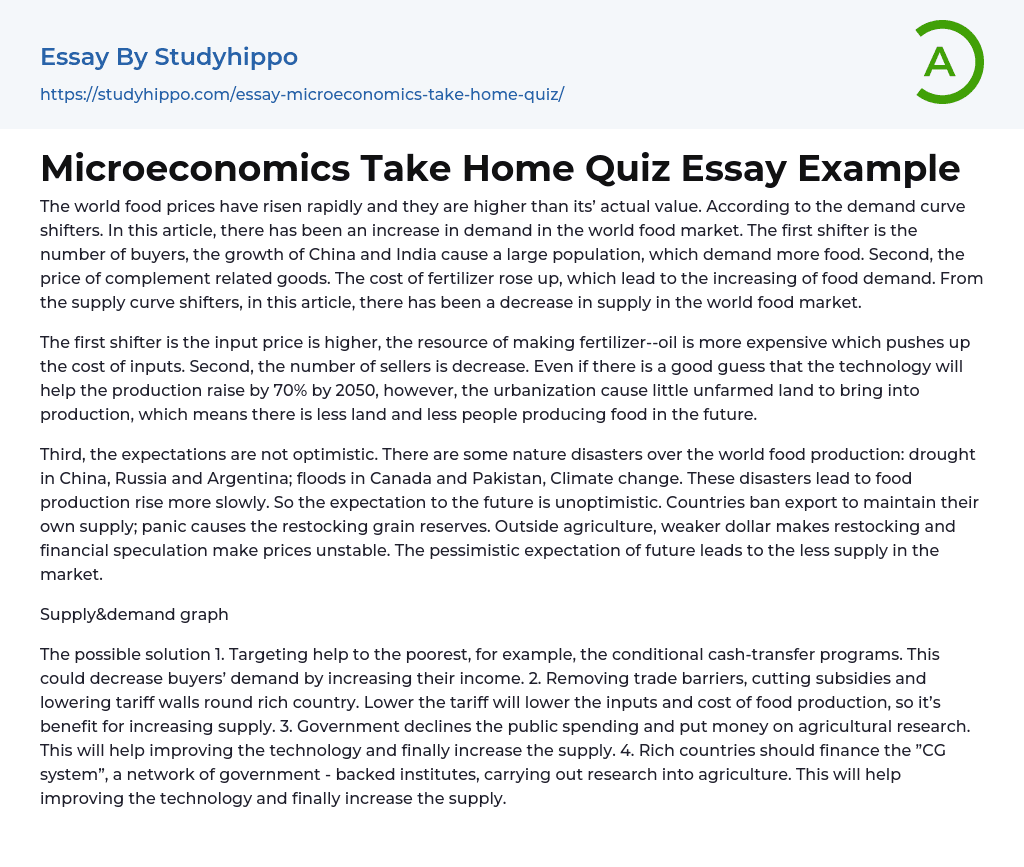The worldwide cost of food has seen a swift escalation, surpassing its primary worth due to the shifters influencing the demand curve. This piece highlights an upswing in global food market demand which can be attributed primarily to two factors. Firstly, there is a growth in buyer numbers, driven by the ongoing expansion of densely populated nations such as India and China resulting in heightened food demand. Secondly, the price hike for associated goods like agricultural fertilizers that have become increasingly costly thereby triggering a rise in food demand. In line with supply curve shifters mentioned within this piece, it's observed that there's been a downward trend in the global food supply.
The first factor driving change is the rising cost of inputs, such as oil, which are necessary for fertilizer production and thus raises manufacturing expenses. In addition, the
...count of producers is decreasing. Despite predictions that technological progress could boost production by 70% by 2050, urban growth reduces available unexploited land for cultivation. This points towards a future where fewer areas and individuals will be engaged in food production.
Finally, the future predictions are not optimistic. Various global natural disasters have negatively affected food production, including droughts in China, Russia and Argentina and floods in Canada and Pakistan, coupled with climate change. These catastrophes lead to a slow rise in food production, creating a bleak prediction for what lies ahead. To protect their own resources, nations impose export bans which along with fear-induced stockpiling of grain reserves contribute to instability. Non-agricultural factors such as the weakening dollar value and financial speculation add to price instability. This pessimistic prospect fo
the future results in reduced market availability.
Diagram of supply and demand
A viable resolution could entail the following strategies. First of all, the focus should be on directing aid towards the most impoverished. For instance, through conditional cash-transfer programs, this could minimize buyer demand by raising their income. Secondly, by abolishing trade barriers, eliminating subsidies and reducing tariff walls around wealthy countries, this could decrease food production costs due to a diminished tariff, hence increasing supply. Thirdly, governments should trim down public expenditure and invest in agricultural research to enhance technology and thereby boost supply. Finally, affluent countries should fund the "CG system," a consortium of government-supported institutions dedicated to agricultural research, leading to improved technology and an increased supply.
- Food Safety essays
- Food Security essays
- Beverages essays
- Cuisines essays
- Dairy essays
- Desserts essays
- Fast Food essays
- Bread essays
- Meal essays
- Meat essays
- Organic Food essays
- Rice essays
- Sugar essays
- Taste essays
- Beef essays
- Coconut essays
- Crowd essays
- Dinner essays
- Juice essays
- Sainsbury essays
- Cooking essays
- Ginger essays
- Oreo essays
- Drink essays
- Beer essays
- Wine essays
- Coffee essays
- Tea essays
- Cake essays
- Hamburger essays
- Ice Cream essays
- Burger essays
- Pizza essays
- Fruit essays
- Lemon essays
- Food Waste essays
- Favorite Food essays
- Alcoholic essays
- Soft Drinks essays
- Cookie essays
- Starch essays
- Yeast essays
- Cola essays
- Pizza Hut essays
- snack foods essays
- chips essays
- Biscuit essays
- Brewing essays
- Brewery essays
- Agriculture essays




